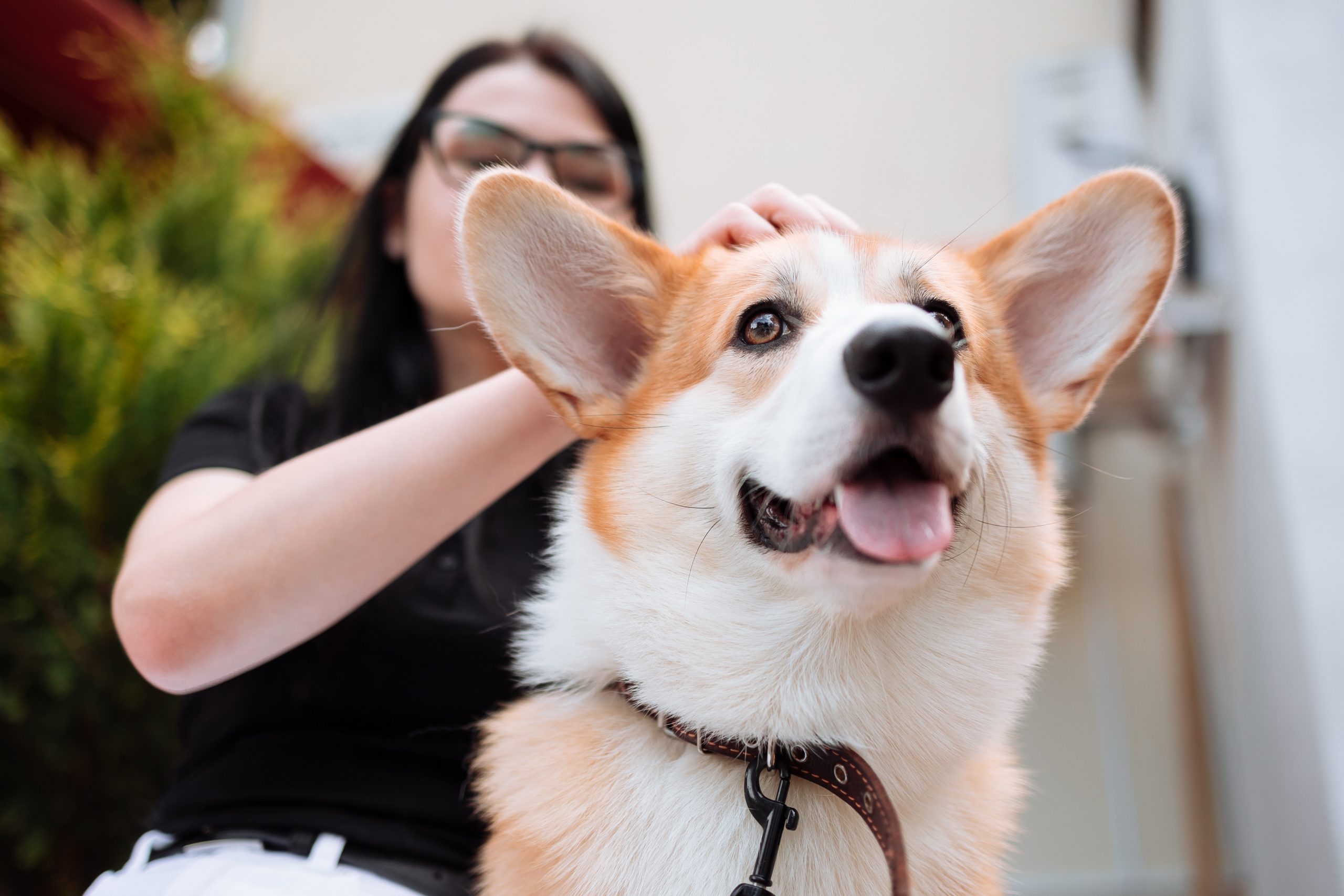Although dogs have two more legs than humans, they still have to limp if they are injured or have to use their feet. If your dog starts to limp, you may be able to perform some first aid at home.
What causes lameness?
Lameness is caused by injury to or debilitation in one or more of the legs – bones or muscles, nerves or skin. Some limps are easily identifiable. A broken bone or dislocated knee joint can cause swelling, and the leg might be at an incongruous angle. Interdigital pyoderma (skin infections) can cause lameness. These red, moist spots will appear between the toes. Abscesses and deeper infections will present as warm, soft, moving swellings beneath the skin. There may not be any external signs of injury in cases involving joints or nerves, tendons, ligaments, and muscles.
What is the severity of a limp?
Some limps can be more severe than others. Therefore, it is important to evaluate your dog’s limp and provide first aid. Pay attention to how your dog walks. Do you see a limping leg? Is your dog able to balance on the leg while standing, but not when she walks? Is she able to walk on the leg but stumble a little? Is she taking shorter steps than usual? Is the foot never touching the ground?
Next, establish a time frame. What was the first time you noticed the limp? Was it sudden or gradual? Was trauma involved? Was there trauma?
 Do I need to look at the leg?
Do I need to look at the leg?
Do not examine your dog if she is experiencing severe pain. Even if your dog is not in pain, manipulating broken bones and dislocated joints may cause additional discomfort. This is a guideline that will help you determine how severe the injury is: Most dogs won’t walk on broken legs or dislocated joints.
Two people are needed to perform a good exam: one to examine the dog’s leg and the other to restrain it. Dogs that are afraid of pain can bite anyone they love. Stop if the exam becomes painful. Most lame dogs should be evaluated by a veterinarian. Here are some tips in case you do decide to try it.
There are many reasons that dogs may limp. The severity of the condition can vary. Some cases will require immediate medical attention, while others can be treated at home. Continue reading to learn more about the causes of lameness in dogs, and how to treat it at home.
Other than the obvious sign of lameness, dogs may not be able to walk with their affected limps.
Reluctance or inability to play fetch or other activities that he/she enjoys.
When climbing steps, don’t be afraid to be nervous.
When the affected leg is touched, cry out in pain.
Dogs that are lame
Trauma or injury to the Paws
Pain and discomfort can be caused by foreign bodies such as thorns or broken glass, or nails. It can cause discomfort and can even lead to infection if it isn’t completely removed.
Dogs can get burned, frostbite or other injuries that can cause them to limp, lick their paws and/or become irritable.
Limping can be caused by injury to any part of the leg (bones and muscles, tendons, ligaments or skin), as well as dislocations, trauma to the joints, and injuries to the spine. In large breeds of canine dogs, a torn cranial-cruciate ligament (CCL), is common. Limping is a common symptom.
Dog with an injured leg
Joint Disease
Limping can result from wear and tear to the joints and musculoskeletal system. These are some common medical problems:
Hip dysplasia
Elbow dysplasia
Intervertebral disc disease (IVDD).
Osteoarthritis, a common problem in older dogs, is common. It can affect any limb, as well as the bones of your neck and vertebrae.
Osteochondrosis dissecans, or OCD, is a condition that affects dogs younger than 10 years old and causes abnormal cartilage growth.
In smaller breeds, luxating patella is more common. Dogs with affected knees may experience intermittent limping. This is due to the kneecaps sliding in and out the groove in their femur.
Infection
Lyme disease is a tick-borne illness in which the most important symptoms are limping and itching.
Interdigital pyoderma, abscesses and pododermatitis are all skin infections that can affect the paws.
The Bones are affected by Diseases
Large breed dogs are often affected by hypertrophic osteodystrophy or panosteitis. Because of the pain, affected puppies may walk limp.
Bone cancers such as osteosarcoma can affect the bones. The risk of developing this problem is higher for large breeds of dog.
What to do
Severity – How serious can it be?
You should assess the severity of your dog’s preference for a limb if you notice it.
As your dog walks, identify the affected leg. Is your dog able to put weight on one leg while standing still? Is he able to carry it while walking? Are your pet’s steps shorter than normal? Is the problem leg ever on the ground?
Time – How long have the problems been around?
What was the first time you noticed limping? Is it sudden or gradual? Are there signs of trauma? Is there any evidence that the limping becomes more severe after certain activities or at specific times?
Trauma or injury can cause sudden limping. However, gradual onset of the condition may be caused by chronic conditions such as osteoarthritis, Lyme, or hip dysplasia.
Our four-legged friends are standing on their toes with their ankles up, knees forward, and feet in the air. You’ll be amazed at how much stress and weight your dog puts on his joints and muscles if you imagine doing this all day. To chase squirrels, scratch behind ears and wrestle with playmates while jumping on beds and looking for toys takes a lot of energy, strength and flexibility.
Sometimes dogs can be too demanding of their front legs (shoulders and elbows, wrists and toes), or their back legs (hips and knees, ankles and toes). Sprains and strains can be common injuries. You may need to help your dog if they yell at you.
Strains vs. Strains
Although the words sound similar, they can mean very different things.
Strains can cause injury to the tendons linking muscles and bones. If your dog strains, it can cause injury to the tendons that connect muscles and bones. This injury can also occur in athletic dogs. However, it is possible for a dog to get hurt if he slips, falls or jumps while playing. Tendinopathy is a common injury in dogs’ hips and thighs.
Sprains can cause damage to the ligaments connecting bones. Sprains can occur to hunting dogs that jump over hurdles as well as average dogs who fall off the couch or step in a hole. Dogs can sprain their wrist and knees. A torn cranial-cruciate ligament (CCL), connects the bones at the knee and is one of the most severe injuries.
What Does it Hurt?
Your dog may start to limp, or become completely paralysed from the injury. This should not last more than one day, and it should happen again and again.
Both strains or sprains may be ongoing (continued) or sudden (sudden). They can be mild to severe. Based on the information you give them, and the results of tests and a physical exam, your vet will determine what type of injury your dog has. You’ll need to tell them when you noticed the change. Explain:
What your dog is doing differently
You saw them doing what they did when the injury happened
What they’re doing or not doing since the injury. Do they sleep more? Are they limping? Do they sit with one leg extended? Are you not excited to go for a walk? Are you feeling stifling? Are you not eating? These are symptoms that they don’t feel well.
Your dog’s muscles, joints and other health issues will be checked by the vet. The vet will first look at the dog. Next, they will touch and feel certain points to determine if they are sore, warm or swollen. They will want to see the dog walk, stand, and lie down. To see damage that cannot be seen from outside, they may do X-rays, an MRI, or ultrasound. X-rays can show bone problems. For tissue damage, the other types of images are more useful.
How to treat a limping dog at home
Check each pet’s paws to see if there are any signs of pain or injury. You could find a foreign object or injury in the paws. If your pet doesn’t have any abnormalities, you can slowly inspect their wrists, ankles and elbows to see if there are any.
If your dog is able to move and there are no obvious signs of dislocations or breaks, you may not need to put a splint on his leg. You can rest your pet by confining his movements to a crate, or to a small space to limit his movement for several days. You should keep an eye on your pet for several days to determine if the limp is worsening or if there are any swelling or inflammation signs that require prompt medical attention.










